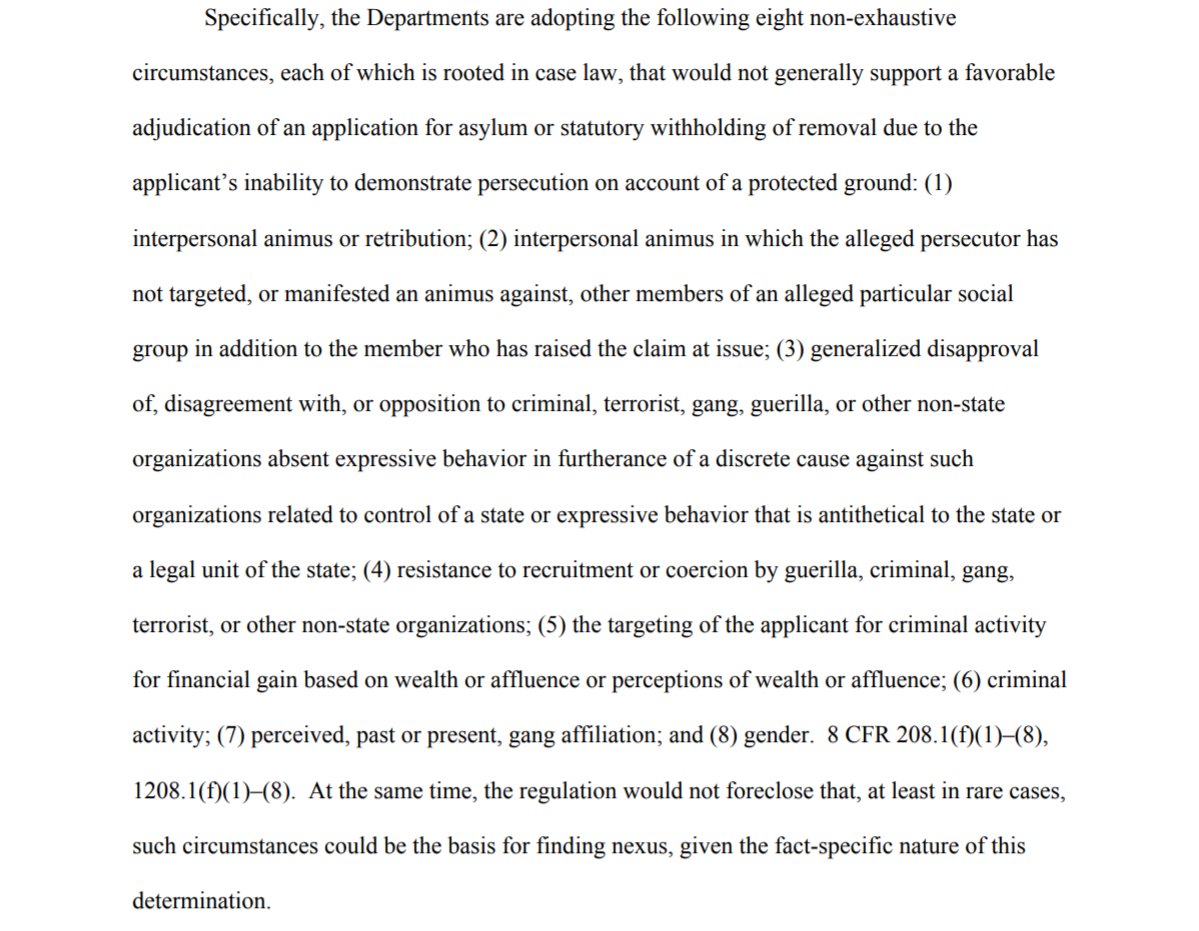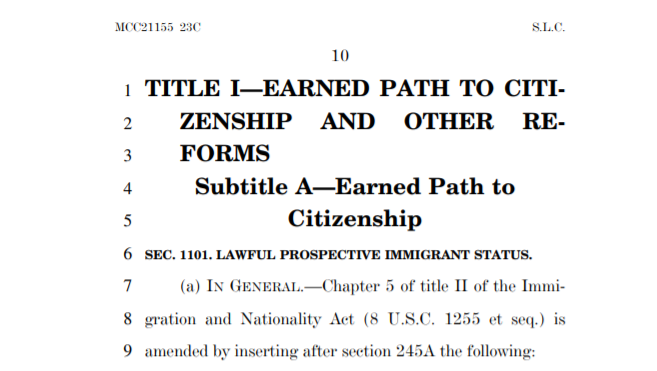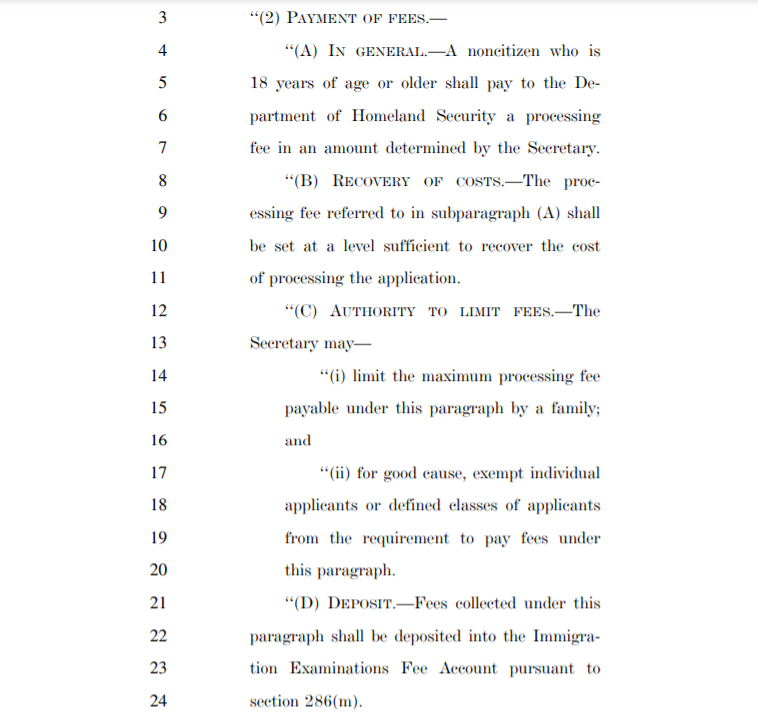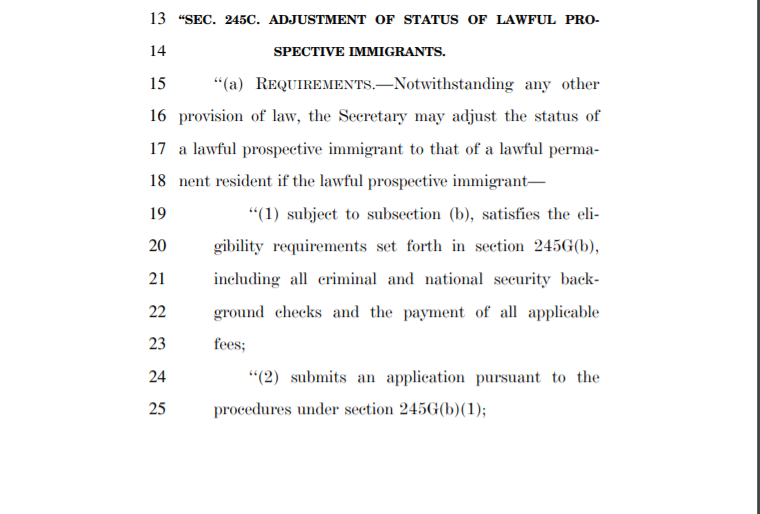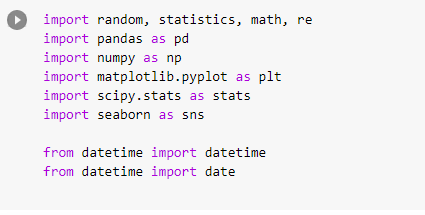Under this new rule, one of Trump's last parting body blows to the United States' system of humanitarian protection, none but the lucky few will be able to win asylum.
The regulation creates near-total bans on asylum for wide swathes of people and herculean procedural barriers.
Before I get into just how horrific this new anti-asylum regulation is, a picture of Petra I took this morning to soften the blow of what is a terrible thing to read through—even though the Biden administration will be working to end it ASAP and court challenges are certain.
Back to the new regulation, which I wrote about in June when it was first proposed.
Today, the Trump administration says that they have "generally adopt[ed] the [Notice of Proposed Rulemaking] with few substantive changes." Meaning it's just as bad.
https://t.co/EhWm9MwzFe
The Trump administration's anti-refugee policies show right at the start.
To them, refugee protections are first about "protecting [our] own resources and citizens" and only secondarily about protecting people from persecution.
That's what led us to turn away Jews in the 1930s.
Despite over 80,000 comments in response to this rule, the overwhelming majority of which were in opposition to the rule, the Trump administration only made FIVE substantive changes.
It's clear that they never intended to respond to comments—and that'll doom them in court.
Before I go through those five substantive changes, I encourage people to check out my thread from June analyzing the proposed regulation.
It goes over in excruciating detail just some of the terrible changes—almost all of which have now been adopted.
https://t.co/Wg31fcb0uZ
Okay, the 5 changes.
First, DHS/DOJ have partially walked back their original proposal to utterly ban new Particular Social Groups in motions to reopen if not presented early on, even when it was ineffective of counsel.
Old language: New language:
Second, DHS/DOJ have also partially walked back a proposal to ban claims of persecution on the basis of death threats without an attempt (i.e. even if someone said "I'm going to kill you tomorrow" that wouldn't have been enough).
Old: New:
Third, DHS/DOJ have decided to graciously agree that illegal entry by CHILDREN shouldn't be a "significant adverse discretionary factor" in asylum... but kept in place penalties against CHILDREN for:
- not applying for asylum in a third country; or
- using fraudulent documents
Fourth, DHS/DOJ have clarified some incredibly confusing language about when a brand new (and absolutely ridiculous) definition of a "frivolous" asylum application goes into place.
And the fifth and last "substantive change"... is to make the rule even worse by eliminating a requirement that people whose applications are at risk of being deemed frivolous be given a chance to respond to concerns and argue why their case isn't frivolous.
Truly despicable.
There were over 80,000 comments in opposition to this rule.
@immcouncil and tons of other orgs submitted extensive comments identifying hundreds of problems with the rules... and DHS/EOIR made just 5 substantive changes (one making things worse) and 13 non-substantive changes.
In the response to the comments, DHS/EOIR puts into footnotes that the regulation will not apply to pending applications, but at NO point in the actual text of the regulation (the part judges apply) is that written.
There will absolutely be extensive confusion over this point.
On the point of whether these rules apply to pending cases, compare the frivolousness bar—which is very explicit that it only applies to new applications—to the general language around the new definitions of asylum law.
Why should we trust DHS/EOIR's footnotes on pending cases?
DHS/EOIR are keeping in place a provision that would place every person who passes a credible fear interview at the border into "asylum-and-withholding-only proceedings."
Under a separate rule—also coming soon—they'd get just 15 days to file for asylum!
https://t.co/Ev7x0sxEUB
The entire regulation is a disaster procedurally and legally. It is blatantly unlawful in multiple locations because it flies in the face of decades of precedent on asylum.
Just on those grounds alone, a court is likely to strike down the rule as unlawful. But there's more!
The rule is also a procedural disaster. DHS/EOIR offers conclusory and insufficient responses to almost all concerns raised in the comments, despite being required to do more.
As a result, the rule will likely be blocked on Administrative Procedure Act grounds. But there's more!
The DHS part of the rule is also vulnerable because as commenters raised (and multiple federal courts have already with them), Chad Wolf is not lawfully serving as DHS Secretary.
Since Wolf doesn't have the authority to promulgate this rule, the DHS rule is totally void.
So, to sum up: this is a terrifyingly awful attack on asylum that would threaten the very foundations of the United States' promises to protect the vulnerable—but like so many Trump policies, it was done so sloppily and unlawfully that it probably won't survive in court.
One of the very first things the Biden administration should do on taking office is to declared they will not defend the rule in court, and at the same time begin the process of formally eliminating the rule and replacing it with something much better that preserves asylum.
To give an example of what I mean by "conclusory and insufficient responses" to comments, check out this one, which can only be boiled down to "nuh-uh."
Another example of total failure to engage with comments?
DHS/EOIR says people are wrong that the rules create blanket bans on certain kinds of claims because they don't "categorically rule out types of claims."
In other words, it's not a ban if 1 in 1,000 can still win. 🙄
